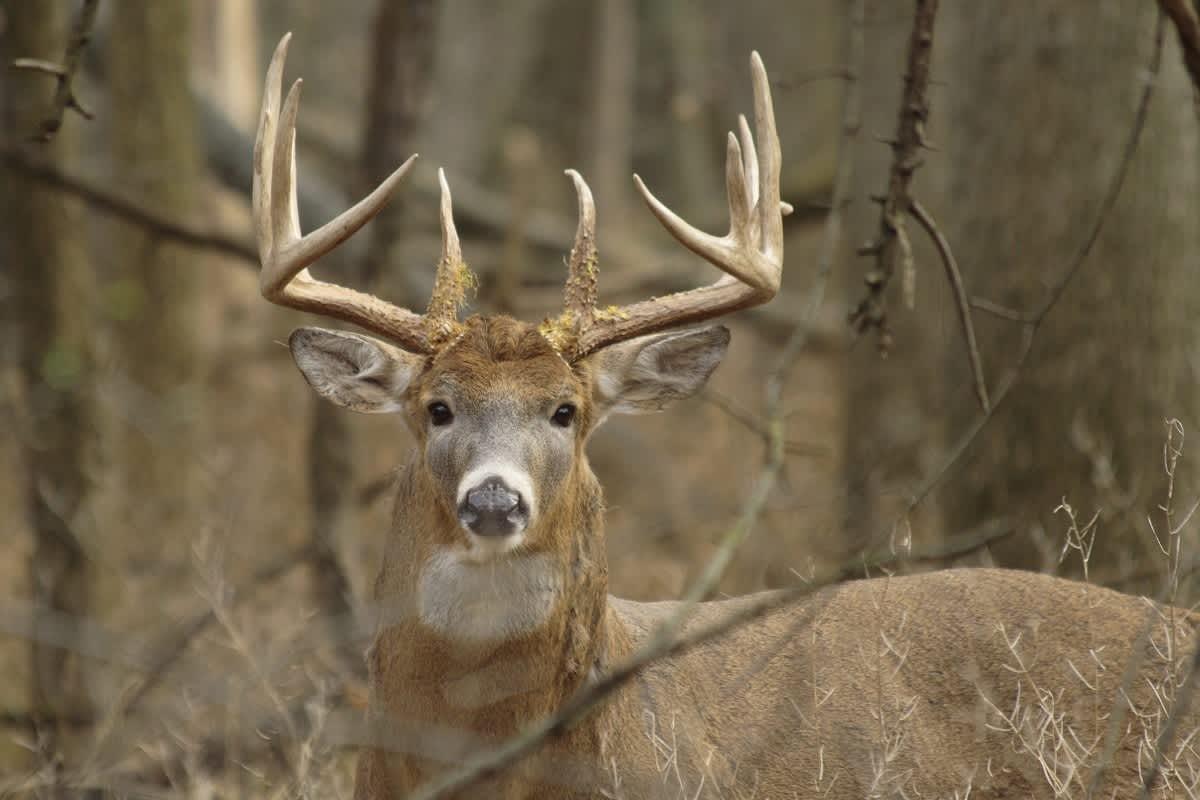How to Bring in Big Bucks with a Mock Scrape
Bernie Barringer 10.23.14

Scrapes are one of the whitetail’s most important communication tools. Here’s how to make one of your own and really get the attention of the area’s bucks.
I have read several scientific studies on the way bucks visit scrapes. The majority of these studies were done with trail cameras positioned so they would take a photo of a buck at the scrape and record the time. Every one of these studies showed that the vast majority of mature bucks (85 to 95 percent) visited the scrapes under cover of darkness.
I have two issues with these studies. First off, they did not add any attraction to their “sample” scrapes, which can completely change the dynamics of a scrape’s activity patterns, and secondly, they only recorded photos of the bucks that actually stepped into the range of the motion-detecting camera. That’s a big issue that few people have talked about. Let me explain how I make my mock scrapes to take advantage of these two subjects.

So far I have not seen a study that recorded the number of times a buck checked a scrape from a distance. It has been my experience that few bucks actually step right into a scrape during the daylight unless there is something in that scrape that arouses their curiosity. This is particularly true of scrapes on the edges of open fields. They simply walk by and scent-check the scrape from a safe distance, in thick cover if possible, then move on if there isn’t anything that trips their trigger. I believe many bucks checked the scrapes in those studies without approaching the camera, so the vast majority of daylight buck activity at scrapes was not recorded. At nighttime, bucks—particularly mature bucks—are more likely to walk boldly right up to the scrape.
This is the basis for why I alter scrapes and make mock scrapes. I have used a high-quality buck lure or fresh urine in a scrape many times, and it arouses the buck’s curiosity, increasing the chances that he will step right up to the plate during the day. But a buck knows whether a scent is fresh or old. Lure lying in the scrape loses its drawing power within 24 hours. I have switched to using a scrape dripper to apply the lure because it is continually adding fresh scent. Plus the drippers are designed so they drip more during warm temperatures, which generally means they drip more during the day.
While you can use this method on existing scrapes, I also create my own mock scrapes because that allows me to put them where I want them, and position them in an area that will give the buck more comfort to approach the scrape during the daylight. By getting the bucks to the scrape, I have increased my chances of getting a photo inventory of all the bucks in the area, plus I have conditioned them to feel comfortable at the scrape during legal shooting hours. This increases my chances of eventually getting a shot at them.
All good scrapes have an overhanging branch, often called a licking branch because the bucks chew on it. They also rub their antlers on it and rub secretions from their preorbital glands on the branch. These give the scrape some realism and your mock scrapes will become very realistic with the visit of the first buck if you have a licking branch about five to six feet above the scrape.
I like to use a shed antler to scrape away the ground cover down to the dirt because it looks real. Once you try this you will see that the antler makes scratches that closely resemble a buck’s hooves, further adding credibility to your ruse.
Scrape an area about three to four feet in diameter and throw the stuff around the sides of the scrape. Lots of visual appeal adds to the attraction. The scent of fresh dirt also appeals to deers’ curiosity.

The scrapes will start getting a lot of attention about the first of October, but you can make mock scrapes and have deer on them any time between the end of September and the end of November. Peak time for natural scraping activity and mock scrape visits is the last two weeks of October in my area of the Midwest, and a little later farther south.
I like to place a trail camera within 15 feet of the scrape. I’ll get photos of bucks and does along with an assortment of other animals that are attracted to good lure, such as coyotes, coons, and even stray cats. Seeing a lot of does at the scrapes gives me a lot of confidence that things are going to happen. With both bucks and does, your scrape becomes a hub of activity for the area and that’s what you are trying to create. Rubs and other scrapes appear nearby. When that happens, let the hunt begin!
The temptation may be to put a stand up right over the scrapes, and sometimes that works. But remember what I said earlier about the bucks scent-checking them from downwind—once they smell something of interest, they will make a J-hook and approach the scrape from an angle that quarters them into the wind if the terrain and cover allows it. Keep this in mind as you choose your stand location.
Mock scrapes allow you to get a look at the bucks in the area and often lead to a chance to hunt them. It takes work to choose good locations and set them up, but I recommend making a couple and see how well it works out for you. You may be pleasantly surprised.
To learn more about using mock scrapes to attract bucks, check out the video below.
Follow Bernie’s bowhunting adventures on his blog, bowhuntingroad.com.

